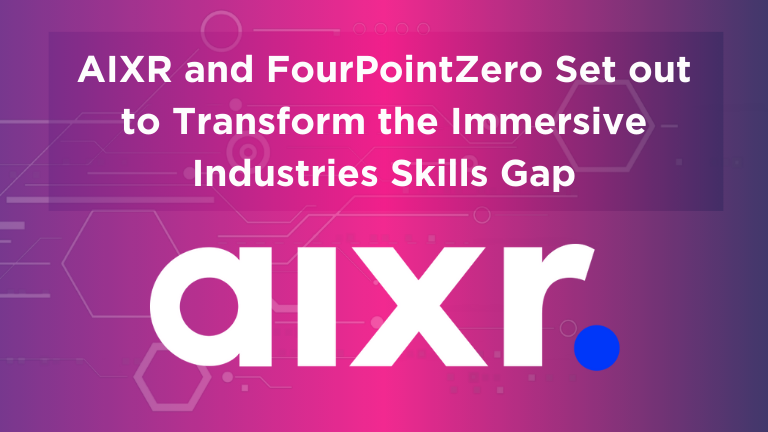The Best Augmented Reality SDKs for Developers
Augmented Reality (AR) is transforming the way we interact with the world around us. By blending digital elements into our physical environments, AR is enabling more immersive and engaging experiences across devices.
As the demand for AR technology surges, driven by both consumer and enterprise applications, the market is forecasted to grow at an astounding CAGR of 40% through 2027. This rapid growth is fueling innovation in AR SDK’s tools that give Developers the capabilities to build the AR experiences of the future.
For Developers getting started in AR, open-source software options are making the barrier to entry more accessible. While premium software may offer more advanced capabilities, tools allow anyone to experiment with AR app creation, at no cost.
What is an Augmented Reality (AR) SDK?
AR software development kits, or “augmented reality platforms”, provide the essential tools Developers need to build AR apps and experiences. Key capabilities of AR software include:
- Creating and managing 3D digital assets and animations
- Tracking, orienting and positioning virtual objects
- Integrating digital content with the real-world environment
- Handling AR capabilities like plane detection, occlusion, and lighting
By handling these complex tasks behind the scenes, AR software allows Developers to focus on building a unique AR experience and not worry about coding the underlying AR capabilities from scratch.
What are the leading Augmented Reality (AR) SDK’s?
Here are some of the top Augmented Reality software platforms/SDK’s for developers today:
ARCore by Google
As Google’s cross-platform augmented reality SDK, ARCore aims to power AR experiences that blend seamlessly with the real world. ARCore was first released in 2018 as the successor to the Tango AR platform, pivoting to focus on mobile devices.
Built on advanced computer vision technology, ARCore can understand the environment, lighting, and geometry of the user’s surroundings. This contextual awareness enables realistic interactions between virtual objects and real-world surfaces and objects.
With support across Android and iOS, ARCore provides the fundamental AR capabilities to build engaging mobile apps that span gaming, retail, education and more. It leverages the sensors in smartphones and tablets to deliver decentralized, persistent and shared AR experiences.
Now evolved into a full stack AR platform, key capabilities of ARCore include:
- Cross-platform APIs for building AR apps for mobile
- Environmental understanding through match learning
- Motion tracking, plane detection and light estimation
- Shared multiplayer AR experiences
- Cloud anchors for persistent experiences
- Unity SDK for game development
In addition, ARCore also offers extensive documentation, training, and community support to help developers learn. , despite lacking some advanced features of paid platforms, ARCore still grants developers a powerful starting point for mobile AR.
ARKit by Apple
As the leading augmented reality SDK for iOS, ARKit has played an instrumental role in enabling groundbreaking consumer AR apps leveraging iPhone and iPad devices.
Originally launched in 2017, ARKit utilized visual-inertial odometry to perform robust world tracking, enabling the realistic placement of virtual objects. With rapid iterations, Apple has built ARKit into a mature AR platform powering apps spanning gaming, education, retail and more.
Now upgraded to version 6, ARKit delivers an extensive set of leading-edge features. Apple’s continual AR innovations ensure ARKit remains on the cutting edge of mobile augmented reality.
For iOS developers seeking to build immersive AR experiences, ARKit provides the richest set of capabilities to fully leverage the sensors and cameras built into Apple devices. Key features include:
- Face and human body tracking
- LiDAR scanning for next-level scene mapping
- Location anchors to pin AR to real-world places
- Instant AR Quick Look for seamless AR previews
- Multiple camera modes for traditional and depth capture
- AR development resources and community
For iOS Developers, ARKit provides access to the latest device capabilities for building highly dynamic AR experiences.
Echo3D
Originally launched under the name “EchoAR,” Echo3D has since evolved into a company committed to empowering developers with a diverse range of integrated tools for innovation. Moreover, the platform combines 3D asset optimization, management, and delivery with advanced model conversion, compression APIs, and more.
There’s support for both email and Slack included in the platform, so developers can collaborate with their team members in real-time. Plus, even the free plan includes over 4,500 free 3D models to help you start building metaverse-ready environments.
Echo3D Free Software Features:
- Integrations with email and Slack
- Basic analytics for 3D models
- 3D asset management, delivery, and optimization
- 3D Backend-as-a-service
- Advanced model conversion
- Embeddable and shareable WebAR viewer
- 45,000+ free 3D models
Vuforia Engine
First launched in 2008, Vuforia Engine is among the most established and widely-used augmented reality SDKs. Acquired by enterprise software provider PTC in 2015, Vuforia offers robust capabilities for a range of AR use cases.
Vuforia’s key strengths lie in multi-target tracking, object recognition, and spatial mapping to enable precise placement of AR content. Its computer vision technology can identify images, 3D objects, and entire environments for anchoring virtual elements.
The Vuforia Engine SDK supports development across popular platforms including Unity, Android, iOS, and UWP. Flexible license options enable scaling from prototypes to enterprise applications. Key features of Vuforia include:
- Marker-based and markerless AR experiences
- Support for Unity, iOS, and Android development
- Cloud storage for AR assets and targets
- Programming APIs for Unity, C++, Java, Objective-C
- Extensive documentation and developer resources
Additionally, Vuforia provides advanced AR building blocks while also being accessible for beginners through the thoughtful use of pre-built targets and templates.
Spark AR Studio
First launched in 2018, Spark AR Studio provides an intuitive platform for anyone to create augmented reality experiences for Meta apps and devices.
Spark AR empowers creators to easily build AR effects, filters, and lenses for Instagram, Facebook, Messenger, Portal, and Meta Quest without needing to code. The visual editor and templates enable rapid experimentation and publishing to bring AR to an audience of billions.
While free and accessible to all, Spark AR offers advanced capabilities like facial tracking, motion capture, and segmentation tools. As Meta expands their ecosystem, Spark AR continues to be the entry point for developers to build engaging social AR. Key features include:
- Intuitive templates and interactions
- Facial tracking and segmentation capabilities
- Share experiences widely through meta-apps
- Remix public AR effects and assets
- Analytics dashboard for optimization
For Developers focused on social AR experiences, Spark AR provides unique tools tailored to Meta platforms.
Other Notable Augmented Reality (AR) SDK Options:
- ARToolKit – open source library for building AR apps across platforms
- Kudan AR SDK – features SLAM tracking, image recognition, sensor fusion
- MaxST – browser-based AR creation with JavaScript API
- Wikitude – multiple AR features for recognition, tracking, visualization
Tips for Choosing the Right Augmented Reality (AR) SDK
With many options for Augmented Reality (AR) SDK, here are some tips for selecting the right platform:
- Consider your target devices and platforms (iOS vs. Android)
- Evaluate software capabilities needed for your AR use case
- Check community support and learning resources
- Verify software integrations with desired engines and frameworks
- Try out demos and trials of paid software before subscribing
Conclusion
The ideal Augmented Reality SDK provides the full package for smooth AR development – robust features, comprehensive device support, detailed documentation, and an active community.
AR software unlocks exciting new potential for developers to begin building AR prototypes and proofs of concept. To transform interest in AR into a career, specialised AR training and employment support can make a big difference.
The world of AR software keeps rapidly evolving in tandem with advances in AR hardware capabilities. Developer tools are opening the portal to next-generation immersive experiences.




